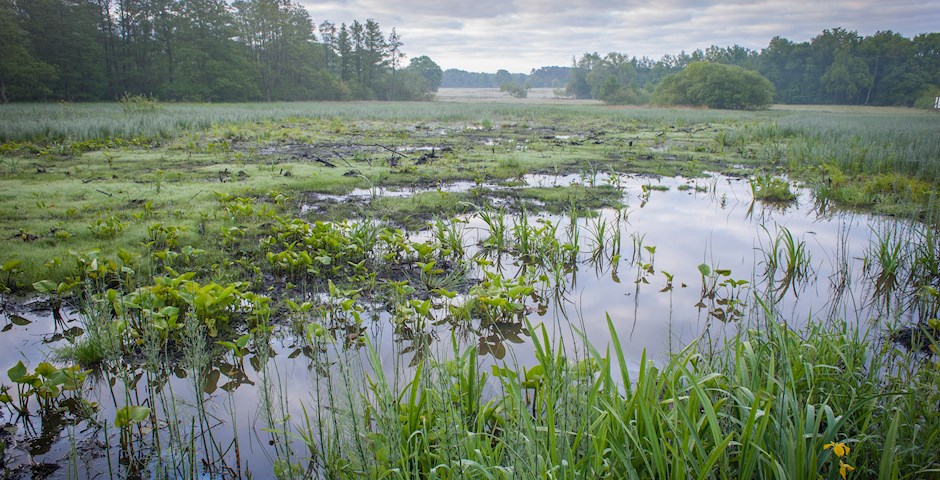
Pilot site Vallei van de Zwarte Beek

A brief tour of the pilot site via:
-Report: The Care-Peat impact within the Valley of the Zwarte Beek (Main output)
- Our fact sheet
- Our Panaroma-solution
Summary
The Valley of the Zwarte Beek is with its 2000 ha Natuurpunt’s biggest and best-preserved peatland in Flanders. Whilst the upstream area has some pristineness left, the Midstream area was heavily drained for agriculture and the peat layer is degraded by now. However, this Midstream region is of utmost importance for nature, climate and water.
250 ha within this Midstream region was restored within the Care-Peat project. It was a long and exhausting process before the actual rewetting could start, starting with trial and error with sandbags, a hydrological study, and a lot of permit request. The restoration could only proceed slowly. But at the end of the project, the restoration works were all completed and the results look very promising. 15 km of local ditches were closed and near the end of the project, the last permit was granted. With this permit 2.7 km of major waterways could be relevelled up to 20 cm below ground level. The results of these works will become clear during the coming years.
Within Care-Peat an adaptive management strategy was developed to manage and improve the habitats and biodiversity in the Zwarte Beek. Marsh tractors are used on the drier soils, whilst track mowers are used to manage dominant species in the wetter parts of the valley. Furthermore, on the best developed patches, precision management is needed to get an even better state of conservation. During the project Greenhouse gasses were measured with the closed chamber technique. This allows us to understand by how much the carbon emissions have actually reduced due to the restoration works. Also, the hydrology is monitored with an extensive network of piezometers installed throughout the Care-Peat site.
Flanders is very fragmented, thus in order to perform ecosystem restoration, much of cooperation is needed from local stakeholders. These stakeholders include local landowners, farmers, inhabitants, but also water managers, governments, farming organisations, amongst others. Through multiple stakeholder meetings and different workshops, information sessions, events, ad-hoc meetings and presentations, a real mind shift for peatland restoration was created. Before Care-Peat, the common water management was mainly based on draining and removing the water towards bigger rivers and finally to the sea. But during the Care-Peat project, more and more awareness was risen for rewetting and infiltration water buffering. In the end a very close collaboration with the stakeholders was established and these will continue after the project, ensuring future restoration of Flanders biggest peatland: The Valley of the Zwarte Beek.
